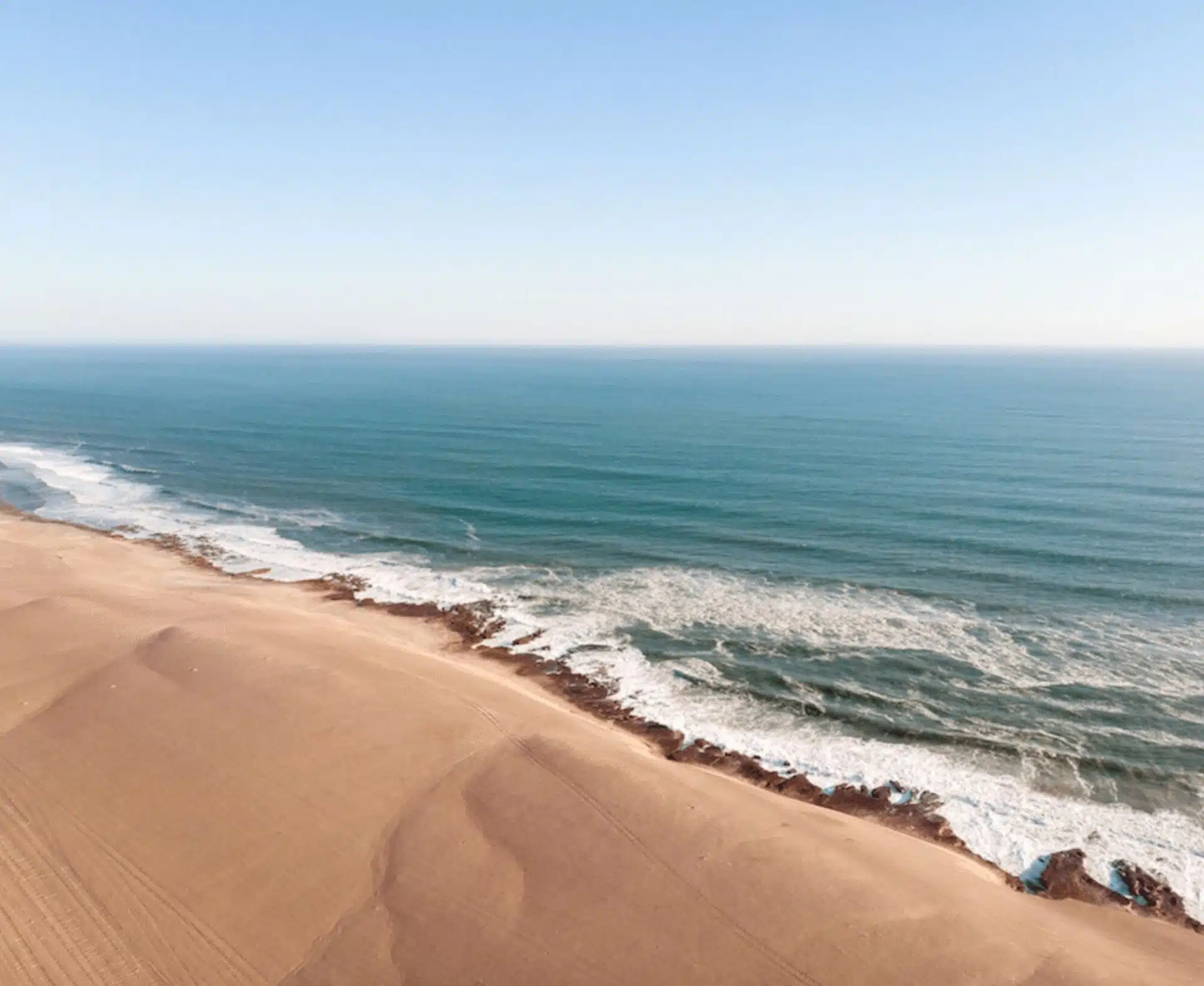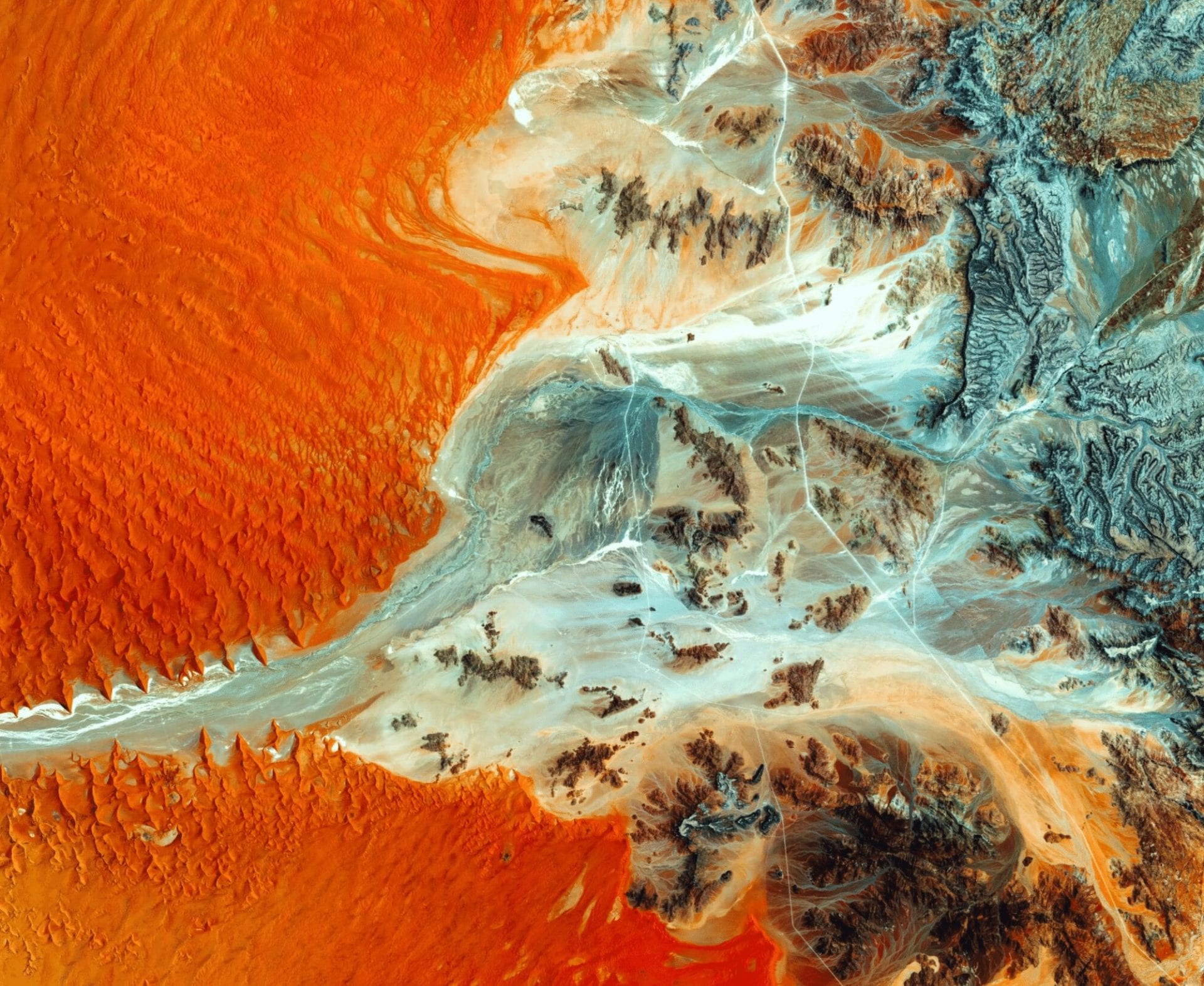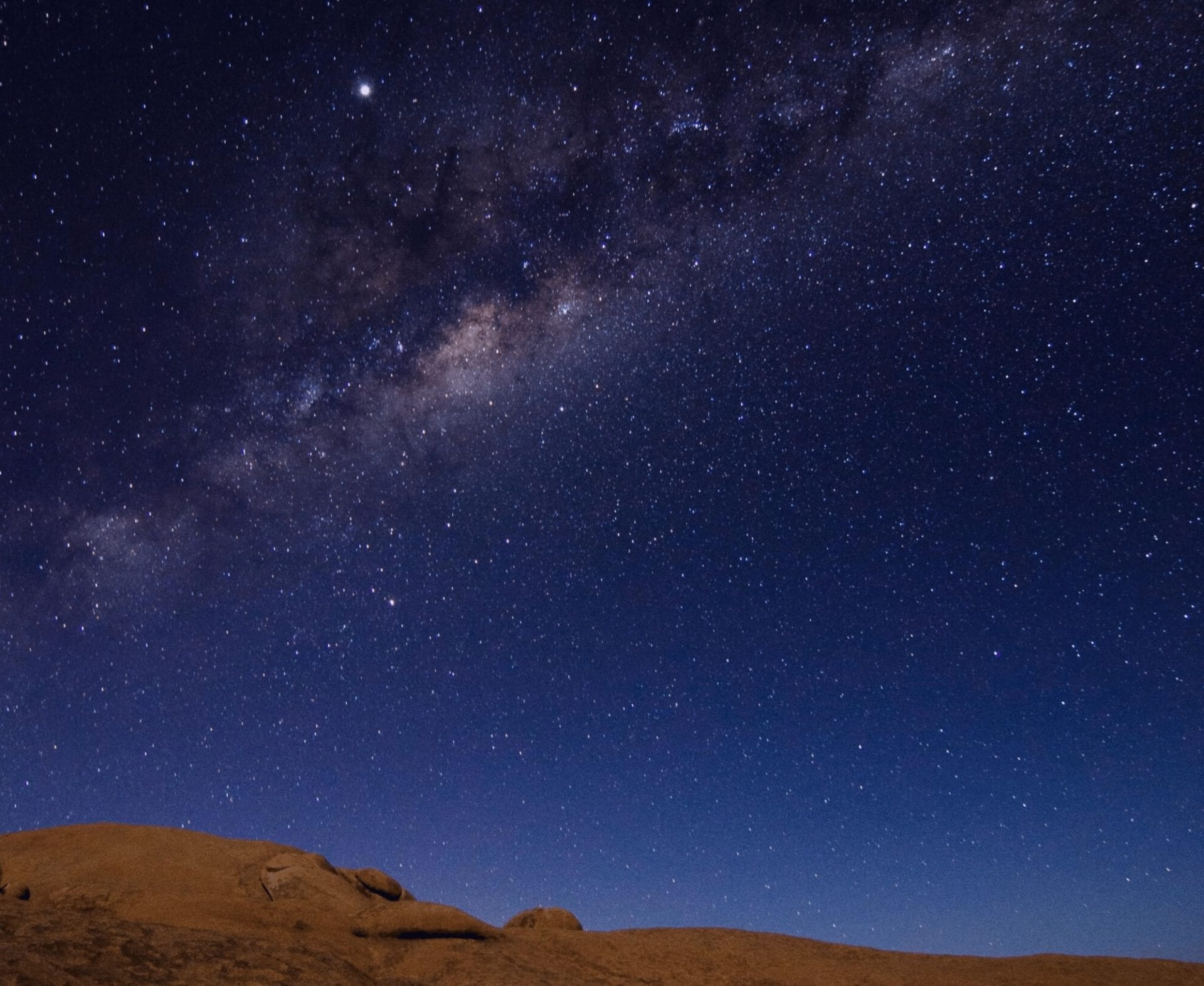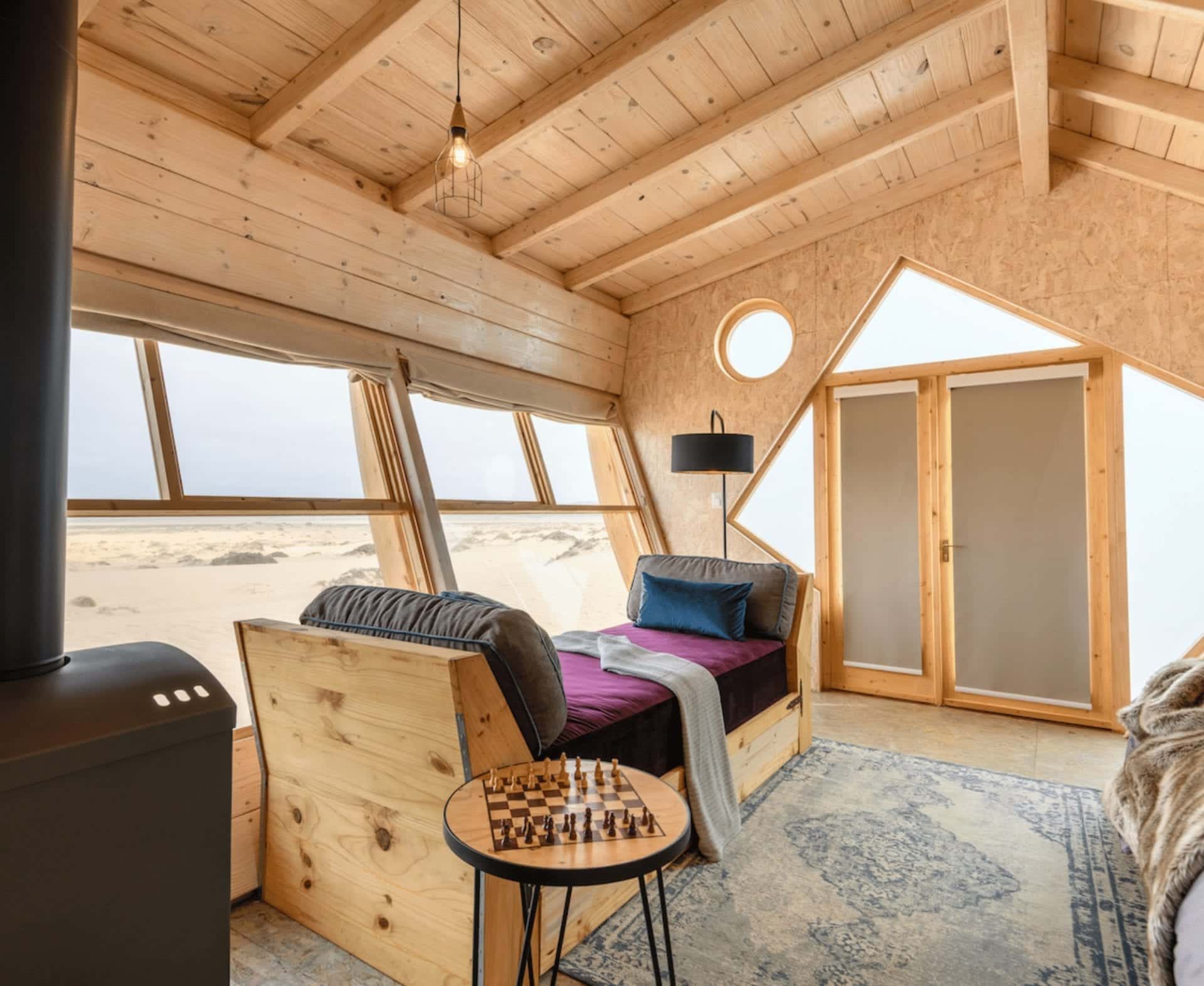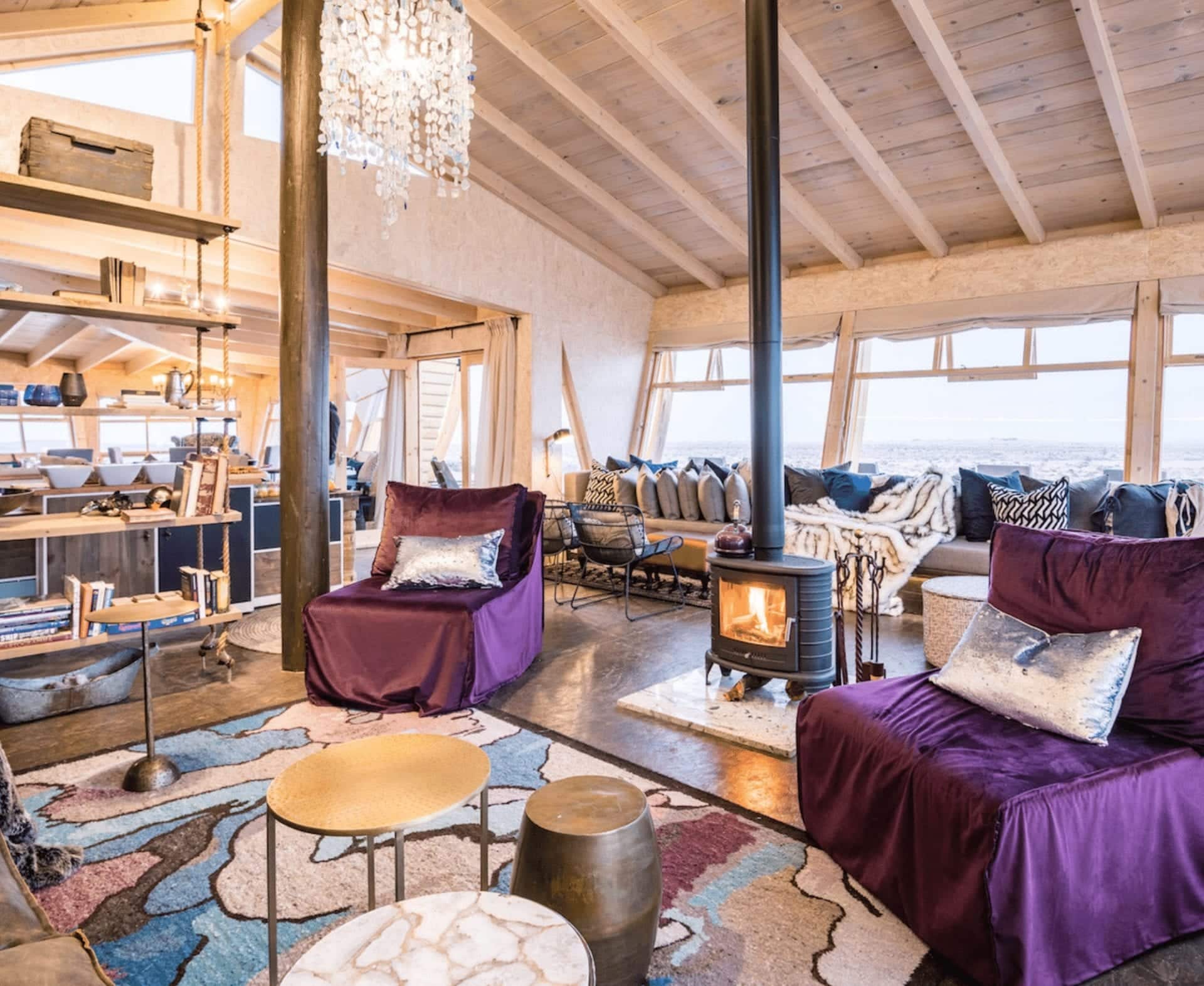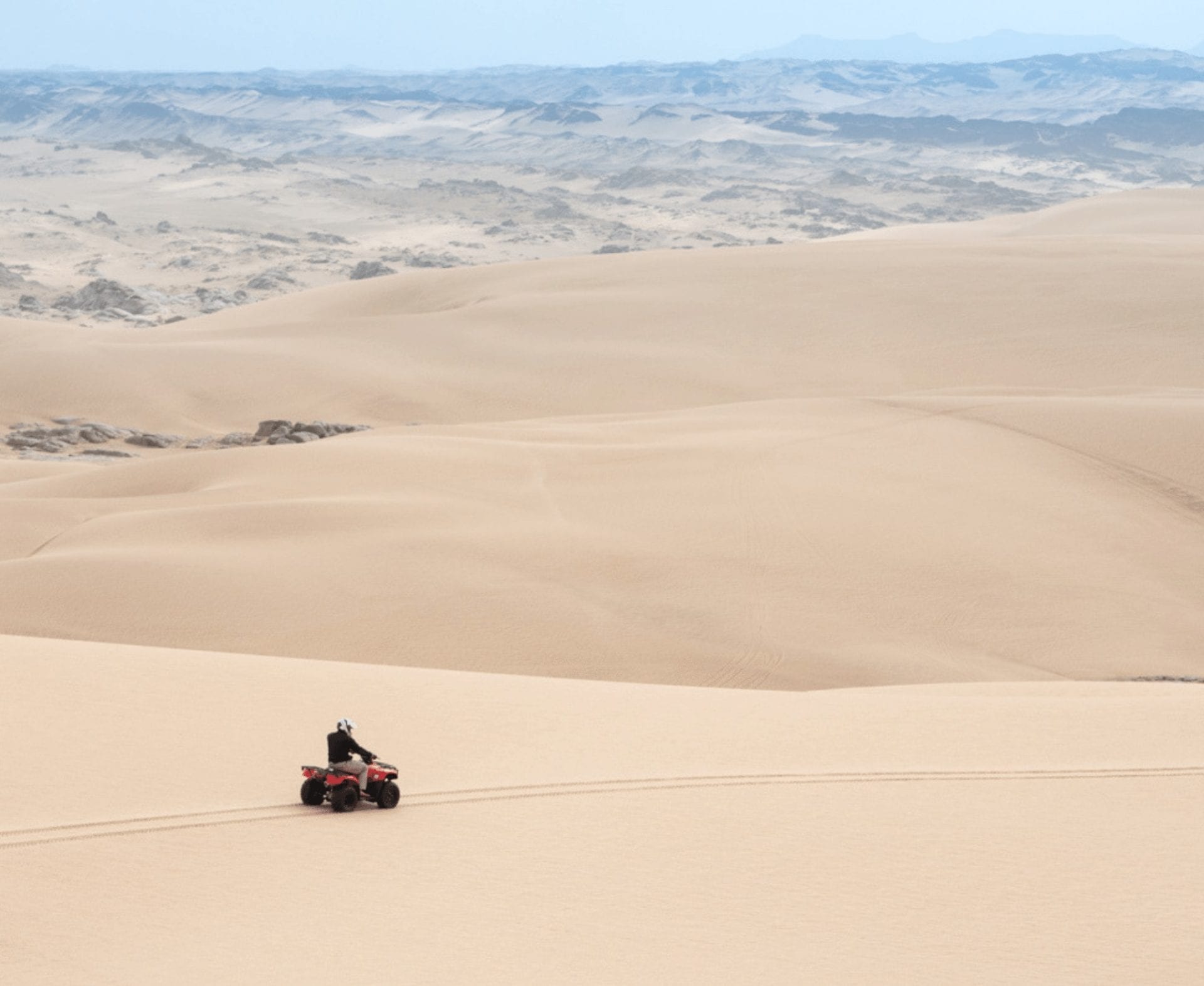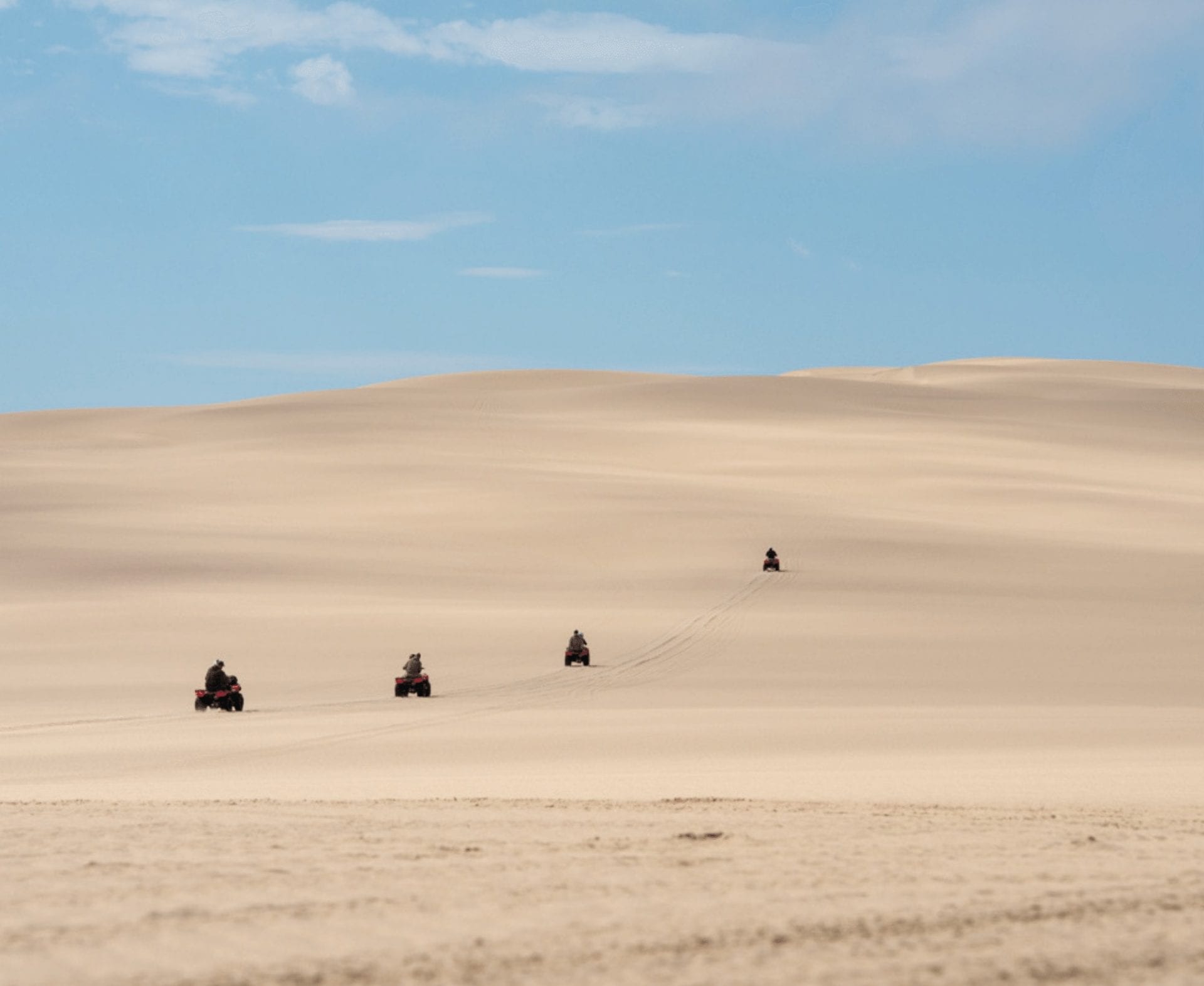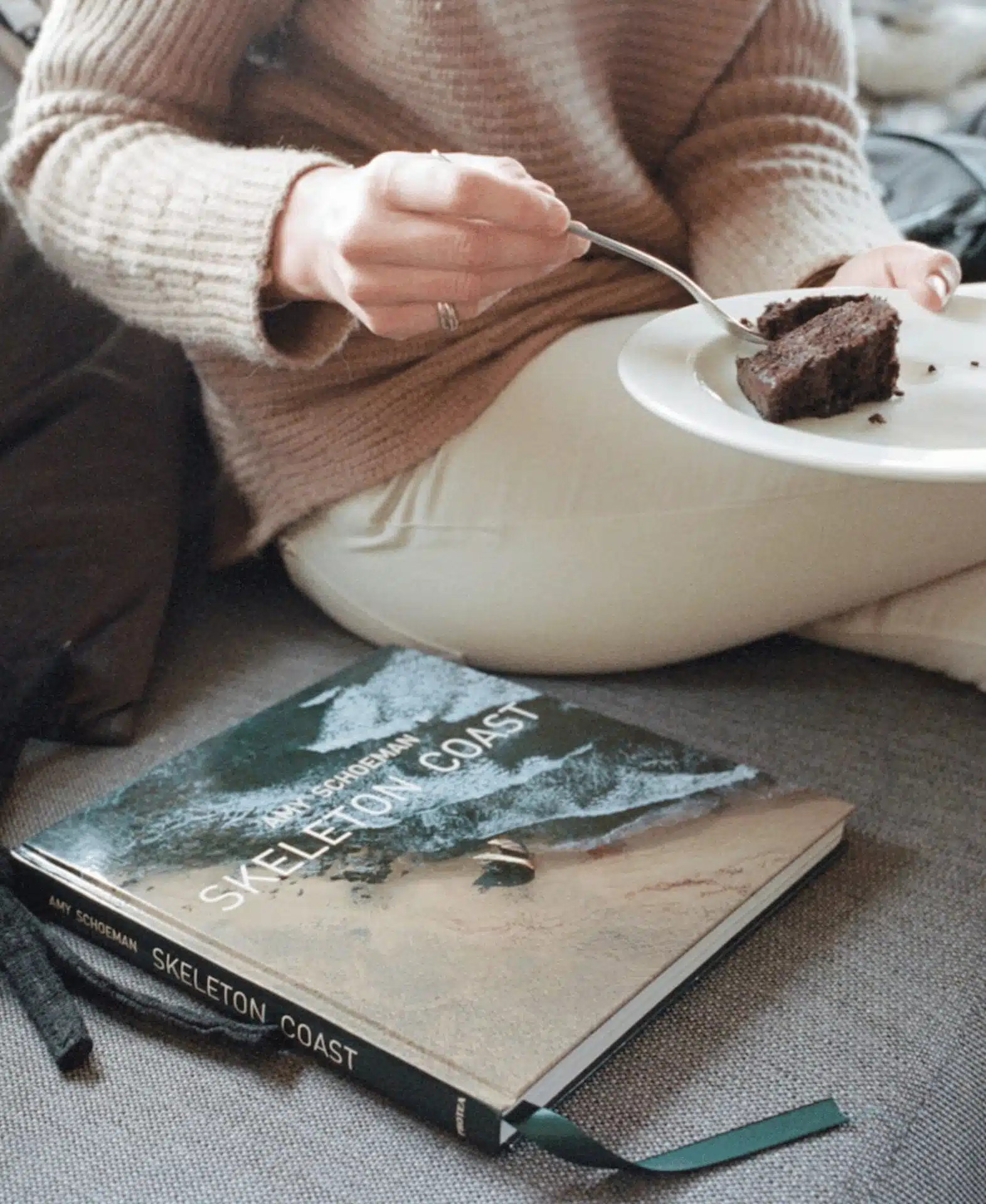 © Shipwreck Lodge
© Shipwreck Lodge
Skeleton Coast Safaris and Shipwreck Lodge
There is a secret world that not many people will talk about.
Even those who have known about it through the centuries only referred to this place in phrases designed to evoke the forbidden.
Peer into history and you will find the first mention of the region through the Bushmen or San hunter-gatherers who lived there. They called it ‘The Land God Made in Anger’. It did not fare much better when the Portuguese sailors discovered it. They spoke of ‘The Gates of Hell’.
The name you will find on maps around the world today warns all comers that the Atlantic Seaboard of Namibia is nothing if not dependable. It continues to be a harsh and dangerous place.
Why would anyone (in their right mind/ not using the surname Fiennes) want to travel to this desolate place? How does one reach the most remote regions of this stretch where the desert dunes tumble into the freezing Atlantic? Where will you sleep?
We will reveal the answers to all these questions as we introduce you to this mystical land and also let you in on a little secret of our own: The Skeleton Coast of Namibia is one of our most favorite places for a safari in Africa and we are in good company. It might be a lesser-known destination but this hauntingly beautiful landscape never fails to charm even the most experienced traveler.
© Shipwreck Lodge
How did it come to be the Skeleton Coast of Namibia?
In 1944 John Henry Marsh published a book (foreword by none other than Field Marshal JC Smuts) about the famous Dunedin Star which ran aground in the South Atlantic to become one of the infamous Skeleton Coast shipwrecks dotted in between the sunbleached whale bones. The book was called Skeleton Coast and it became so popular that its name now appears on every map of the Atlantic Coast stretching between the Angolan border and the Swakop River.
 © Shipwreck Lodge
© Shipwreck Lodge
Almost a century later John Henry Marsh would still recognize this corner of our world in a heartbeat:
The cold and powerful Benguela current still blows a constant wind from land to sea. It hardly ever rains but a thick fog often covers the shifting shores. The fog is a vital part of this ecosystem and it guarantees incredible photographic results.
The beaches are still pounded by very heavy surf. In fact: if you don’t have an engine-powered ship or boat you have to travel through the desert and hundreds of miles of marshland simply to launch into the great Atlantic ocean.
The coast is mostly soft sand with a few rocky outcrops. In the south, the region has gravel plains and in the north, there are giant sand dunes.
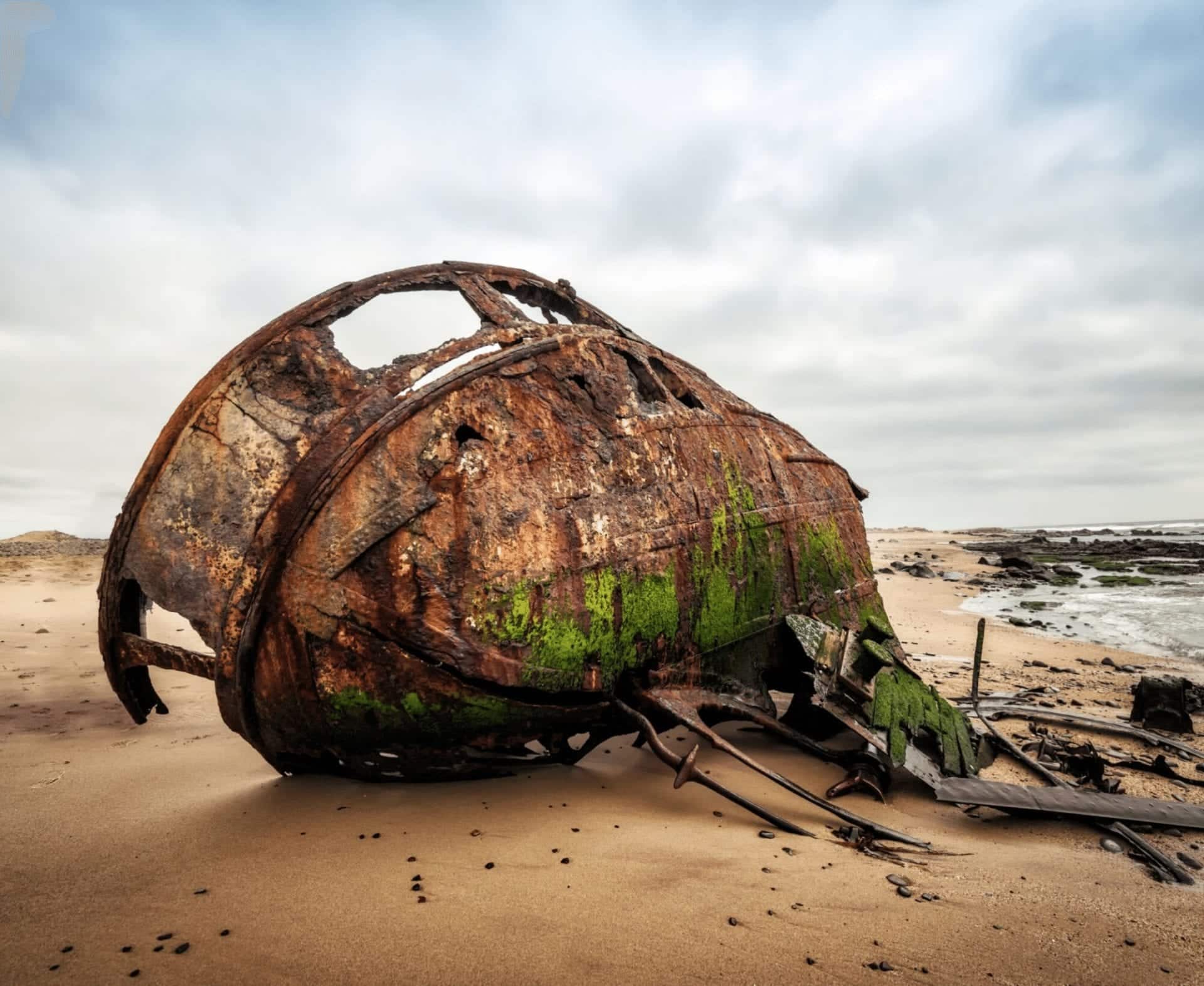 © Lukas – stock.adobe.com
© Lukas – stock.adobe.com
In 1971 a large area between the Kunene River and the Ugab River was declared a nature reserve, protecting just shy of a third of the entire Namibian coastline…
Now, this unforgiving stark desert remains home to elephants, black rhinoceros, leopard, cheetah, giraffe, gemsbok, zebra, springbok, lions, brown hyenas, and other desert-adapted wildlife. These creatures continue to be the patient (and often only) witnesses to thousands of shipwrecks, daring rescues, and brave survivors.
The desert is also home to the Gerrhosaurus skoogi, a striking armor-plated lizard, the 3-ft-long green turtle and Nile soft-shelled turtles. Offshore the area offers Benguela dolphins, killer whales and humpback whales. There are 247 species of birds, including the Damara Tern.
The Skeleton Coast actually has a wider variety of species than you can find in many of Southern Africa’s other parks!
Human visitors are scarcer… it is rare to share the Skeleton Coast with more than a handful of other travelers and day visitors may only stay in the park between sunrise and sunset.
 ©©Francesca – stock.adobe.com
©©Francesca – stock.adobe.com
When should you plan your Skeleton Coast Safari?
The desert brings predictably warm days and cool nights throughout the year and this makes the Skeleton Coast a year-round destination. There is no seasonal rain with the highest rainfall of 0.4 inches (10 mm) happening during the month of March. Game sightings are best between June and October and birdlife between November and April. Between October and March, there is less mist and the angling opportunities are the best.
© Mickael Tournier – unsplash.com | © Sergi Ferrete – unsplash.com | © Shipwreck Lodge
What will you do along the Skeleton Coast?
1. You may have a slight feeling of Déjà vu as you spy Deadvlei in real life. Chances are very good that you have seen this white clay pan floor and its dark, dead camel thorn trees against the red dunes and piercing blue sky in images before. The pan was formed through the flooding of the Tsauchab River which allowed the trees to flourish before the climate changed and sand dunes cut the river off from this area 900 years ago. The trees have never decomposed as the climate is too dry.
2. The extensive scale of the Skeleton Coast lends itself perfectly to scenic flight adventures:
- You may float over the Kuiseb River Canyon, into the dune belt, past Tsandab Vlei to spy 1000 ft tall sand dunes, deserted diamond camps, shipwrecks, vivid salt pans, and the Walvis Bay harbor.
- Or fly over the highest mountain in Namibia, follow the Ugab River to see the desert adapted elephant of remote and rugged Damaraland and look at Cape Cross seal colonies, shipwrecks and fishing villages.
- Sometimes the flight path runs next to seagulls and flamingos and Sandwich Harbour promises an incredible number of birds.
3. As you head for Opuwa or Epupa Falls you can visit an Ovahimba village, learn about the ancient traditions of these unique Himba tribes and search for desert-adapted wildlife.
4. Stopover and take a Rock Engravings & Petroglyphs Tour.
5. Time to stretch your legs with a guided walk in the Fish River Canyon. Lunch is served at an incredible lookout point.
6. When you find yourself yearning for a little green then you can be whisked up the coast to ride the Kunene River between Namibia and Angola.
7. Track rhino in the Ongava Reserve of Etosha National Park.
8. Visit Swakopmund to experience its unique German heritage and superb seafood.
9. The massive barchan dunes that lie just north of Torra Bay are the southernmost part of a vast sand sea that begins in Angola.
10. In Möwe Bay you can walk along a gemstone beach on a multicolored carpet of semi-precious stones including red and maroon garnets, agate, quartzes, amethysts, magnetite (a form of gleaming black iron ore that is magnetic), ilmenite (which contains titanium) and carnelians.
11. The Skeleton Coast has many stunning salt mines. Just south of Cape Cross the subterranean rock salt reaches a depth of 80 feet (25 m), forming exquisite large crystal blocks. The Cape Frio pans extend for 55 miles (90 km) and at Angra Fria the salt pans are 328 foot (100 m) deep.
12. See the clay castles of the Hoarusib Canyon with their turrets and battlements. Composed of solidified silt deposits from ancient rivers these 230 foot (79 m) high formations stand amidst makalani palms.
13. Dive into a world of lichen. The symbiotic combination of algae and fungi that make up the Skeleton Coasts’ lichen plains may seem desolate at first glance but with the right guide, you can discover an entire universe here.
14. Spy the incredible crocodiles of the Kunene River as they follow the freshwater out to sea.
 © Shipwreck Lodge
© Shipwreck Lodge
Which Skeleton Coast Lodge is the perfect place to lay a head filled with desert adventures?
There is only one property inside the famous Skeleton Coast concession. Shipwreck Lodge lies nestled in the dunes with never-ending views of the Atlantic Ocean.
It has a clever answer to the difficult Skeleton Coast accommodation question. The delicate line between the inhospitable and harsh desert and cleverly designed cabins where you are ensconced in luxury and care is beautifully negotiated.
Shipwreck Lodge design was clearly inspired by the silhouettes of the famous ships that lie wrecked along the Skeleton Coast.
The lodge is heavy on light footprints with eco-friendly solar power.
© Shipwreck Lodge
About the Namibian Conservancy model along the Skeleton Coast
Today there are 83 registered conservancies throughout Namibia.
These communal conservancies are self-governing, democratic entities, run by members with fixed boundaries and they were established to ensure economic survival and growth within very desolate rural settings. While farming continues to be the main source of their livelihood the effects of climate change is increasingly making access to alternative income streams important.
In conservancies with tourism potential joint ventures have resulted in an increase in wildlife numbers, income, and employment.
Shipwreck Lodge has a partnership with the Puros and Sesfontein Conservancies cover around 6000 km2 and the area is home to Ovahimba and Herero people. The partnership gives Shipwreck Lodge management access to recruiting local lodge staff and they also contribute to the communities through hardy 4×4 vehicles. The conservancies also receive 8% of lodge turnover on a monthly basis.
© Shipwreck Lodge
Activities at Shipwreck Lodge
Private fishing excursions in a fisherman’s paradise. The chef will prepare your catch for dinner if you like!
The seal colony in Flamingo Pools is great. Exploring shipwrecks, an abandoned diamond mine and a Ventura Bomber on the way there is better.
Experience the roaring dunes at Oasis water point.
 © Shipwreck Lodge
© Shipwreck Lodge
Hop on a quad bike while you are there if that sounds like fun.
© Shipwreck Lodge
And if you enjoy 4×4 you will love exploring the Clay Castles, driving the Skeleton Coast looking out for brown hyena, desert-adapted elephants, and lions.
 © Shipwreck Lodge
© Shipwreck Lodge
More reasons to love Shipwreck Lodge:
You don’t have to sacrifice exclusivity as there are only eight cabins.
Each one comes complete with a fireplace.
You can access Wifi in the main area.
Children of all ages are welcomed.
The green season runs: 11th January to 31st March
Shoulder season: April to June; November to January
High season: July to October


